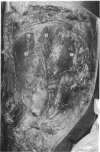Abstract
The more accurate description of the anatomy of the glutei and the new biomechanical theory that has been presented describe the abductor mechanism as a system in which the tensor fasciae latae has the primary function of balancing the weight of the body and the non-weight-bearing leg during walking. Gluteus medius with its three parts and phasic functions is responsible for the stabilisation of the hip joint in the initial phase of the gait cycle. It is important also in initiating the major gait determinant of pelvic rotation. Gluteus minimus functions as a primary hip stabiliser during the mid- and late phase of the gait cycle.
Full text
PDF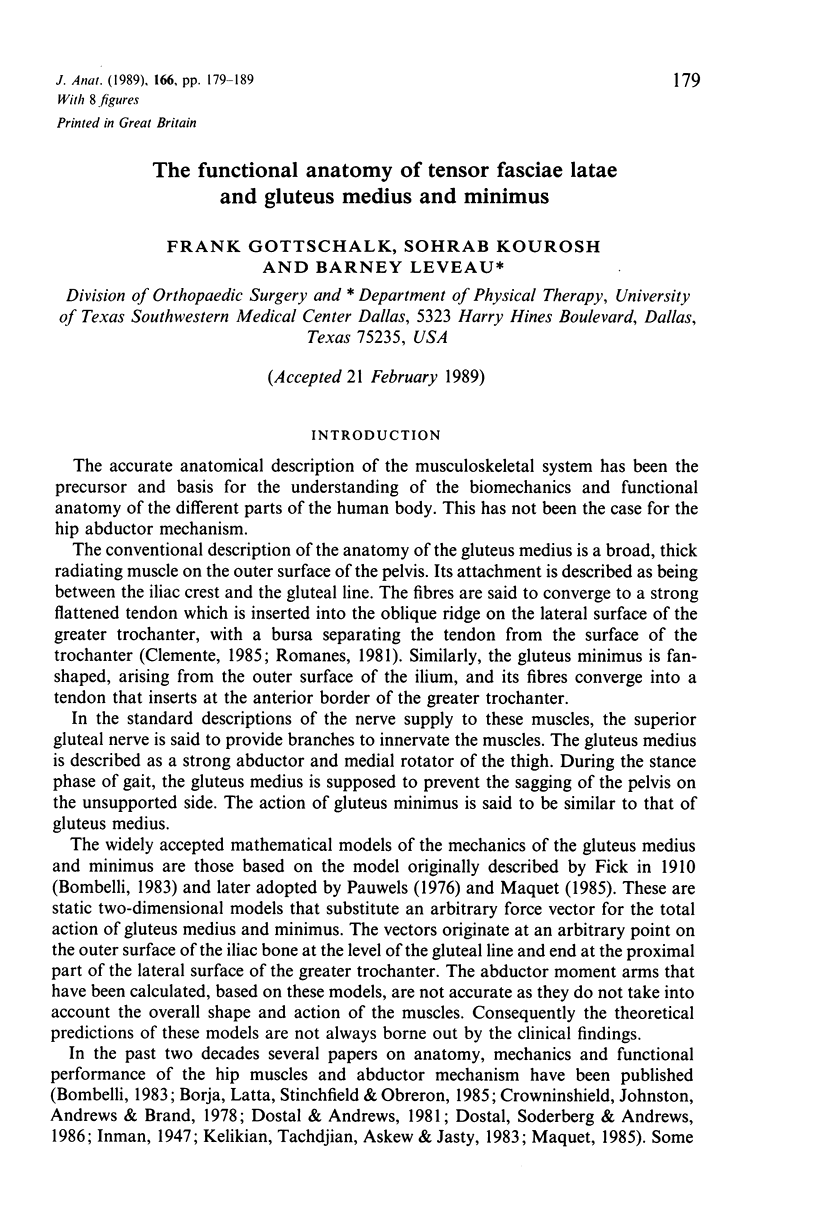
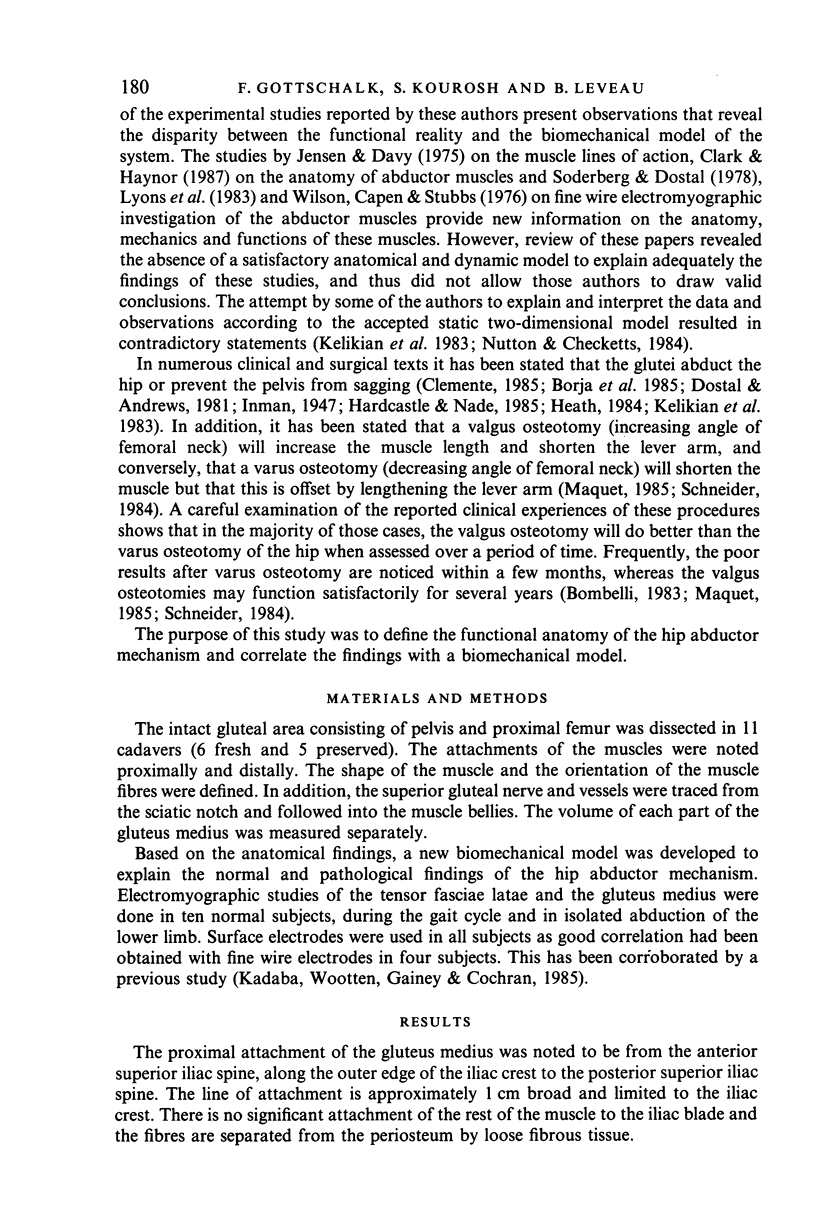

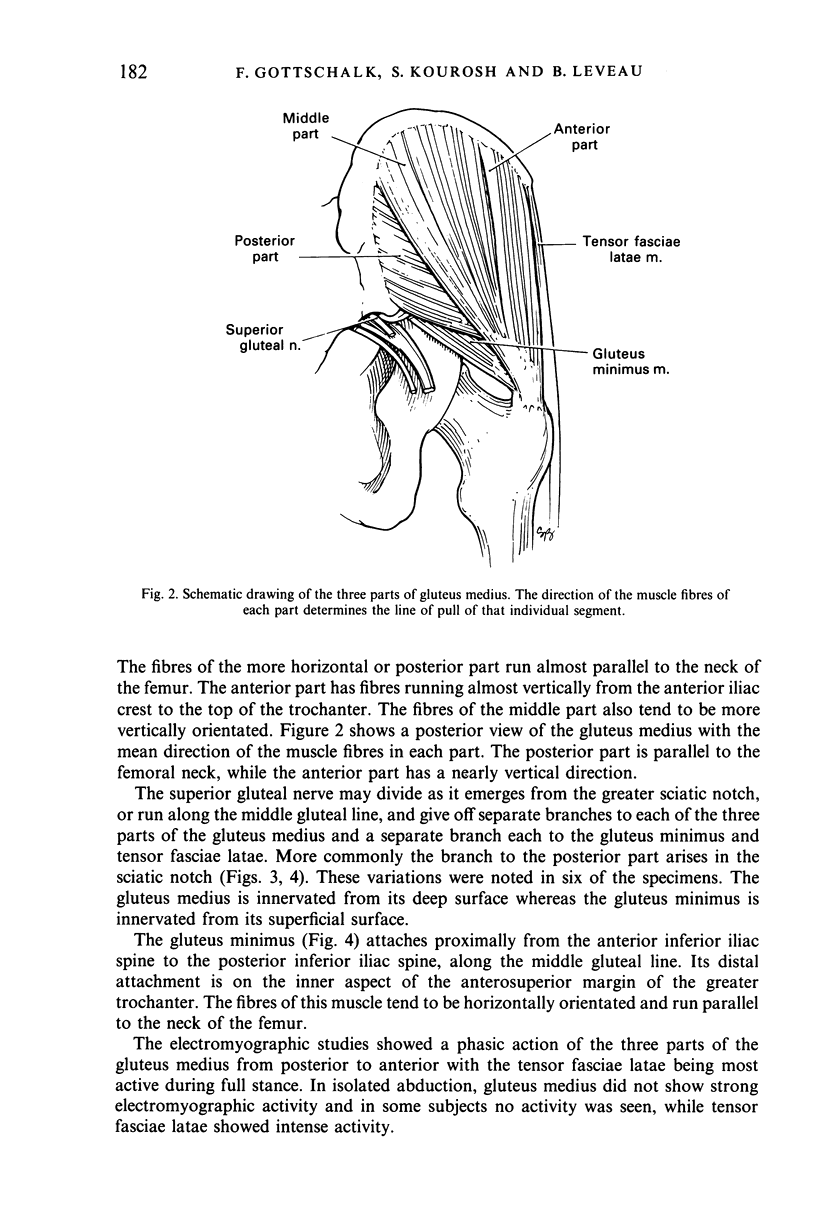
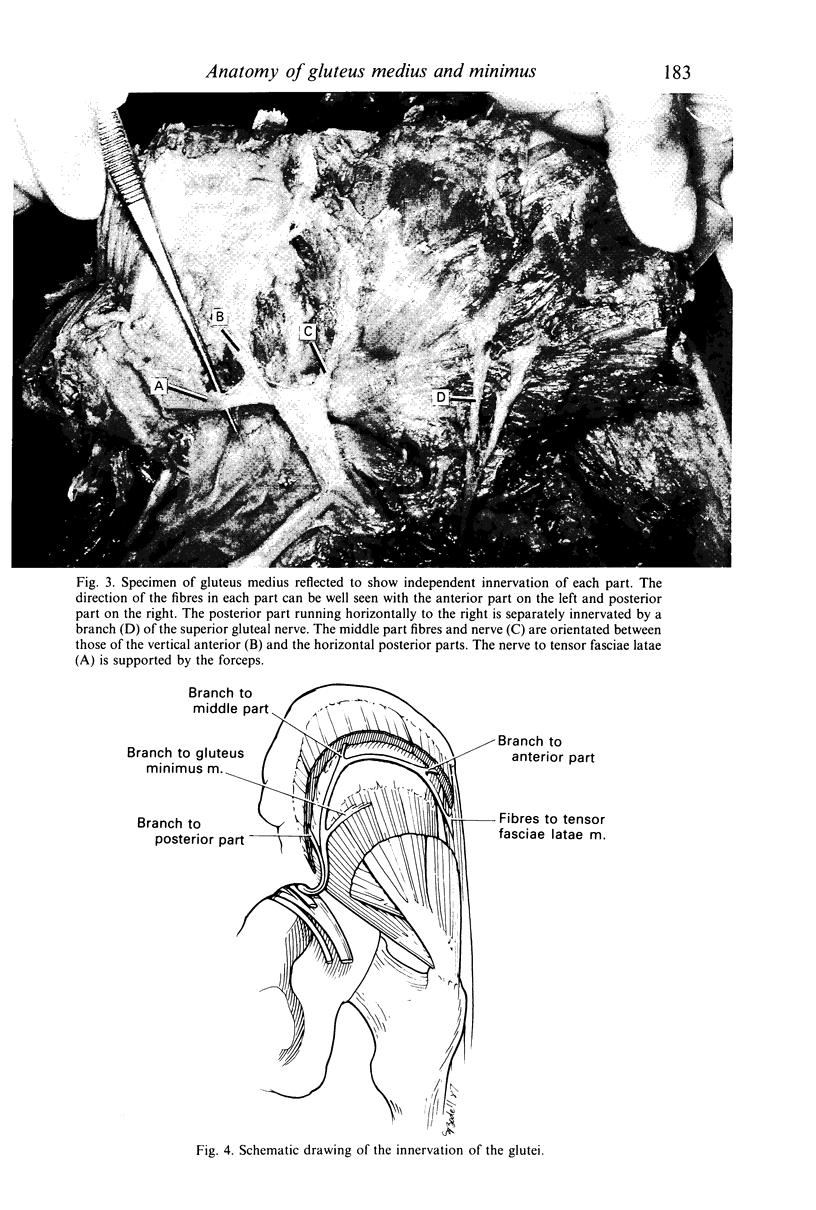
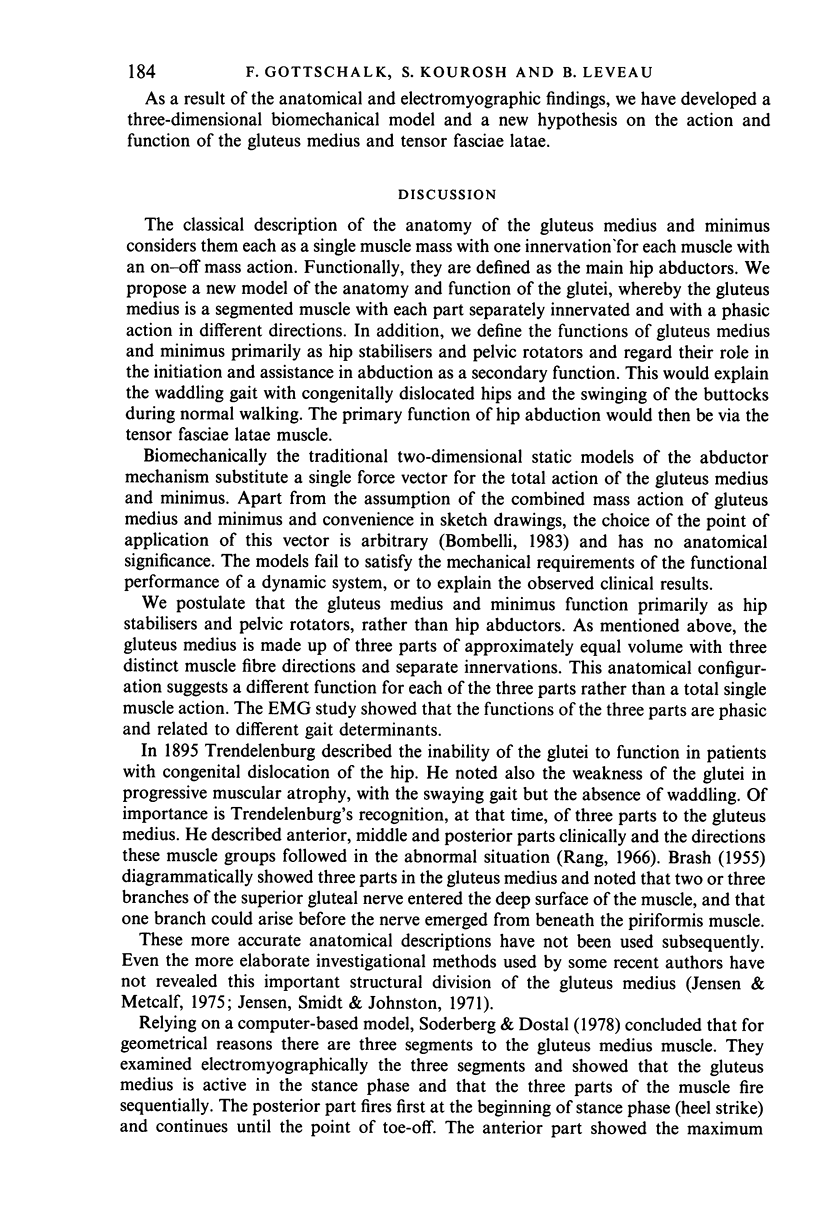
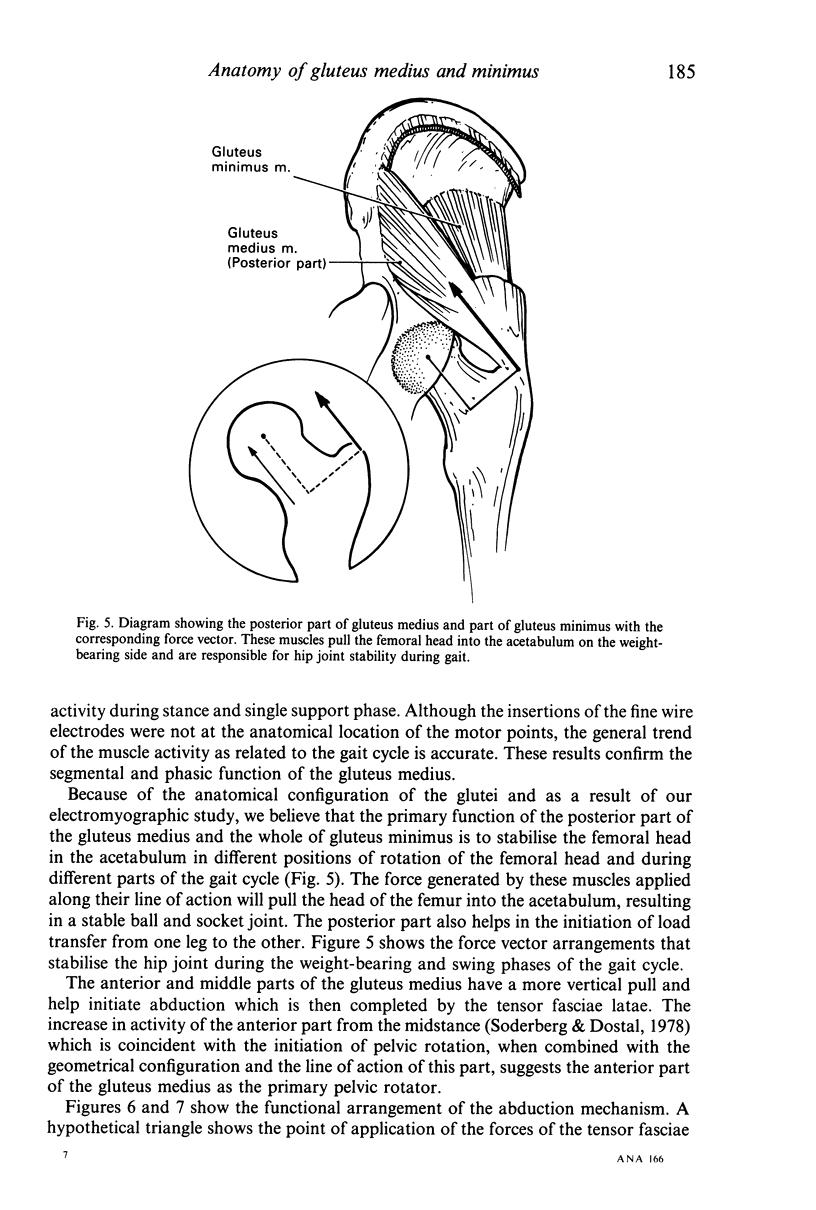
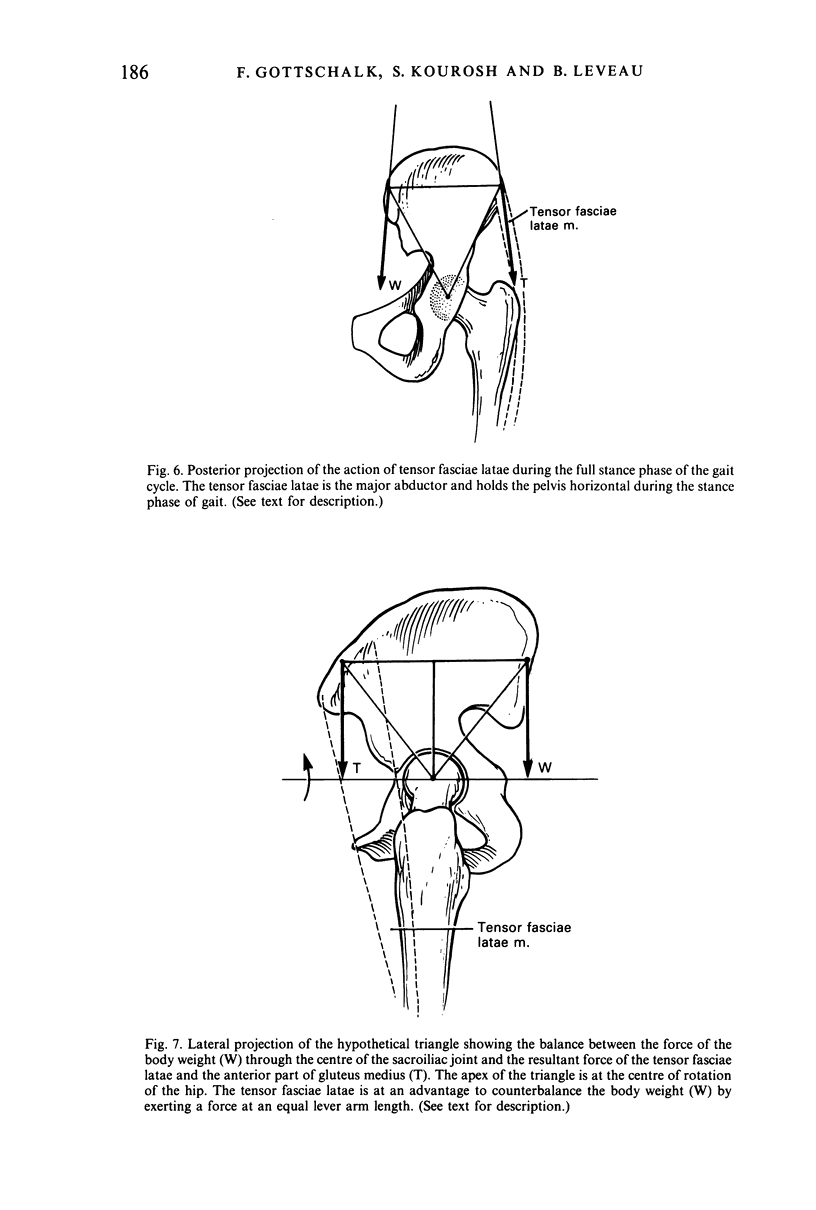
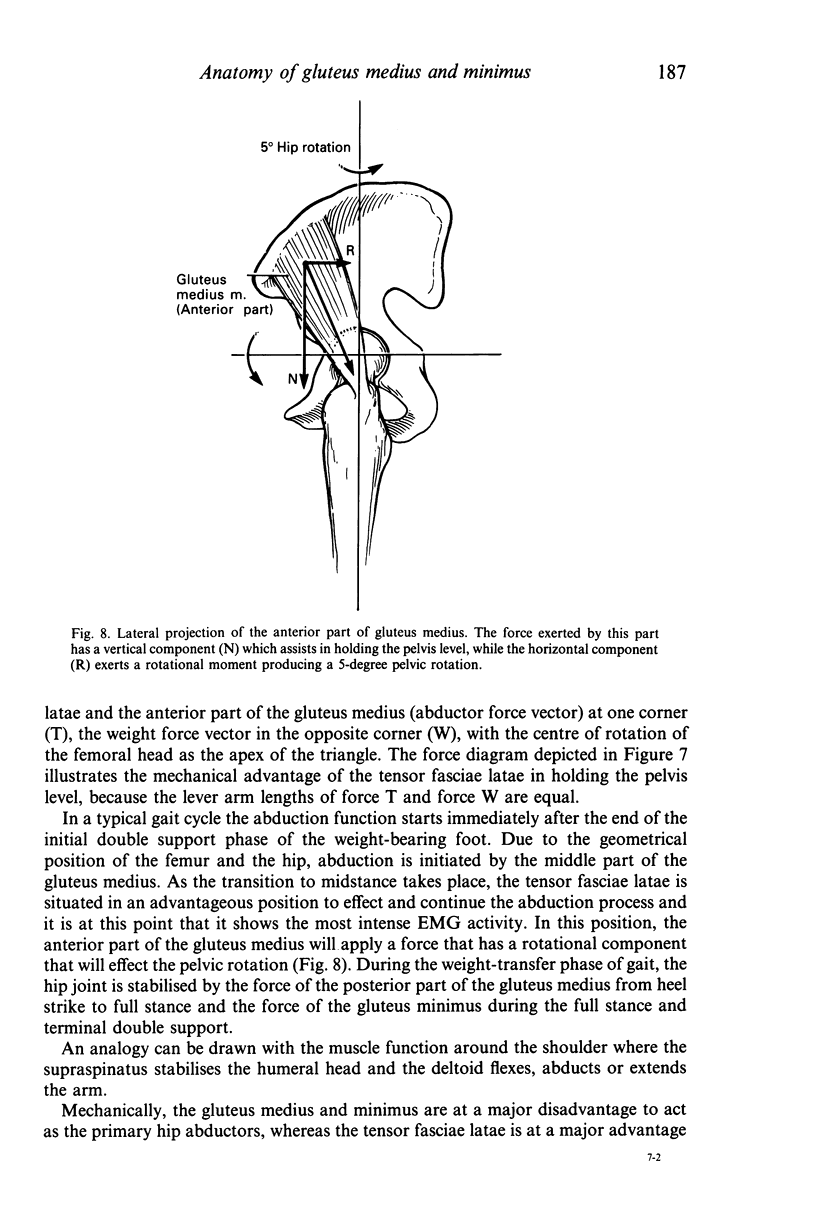
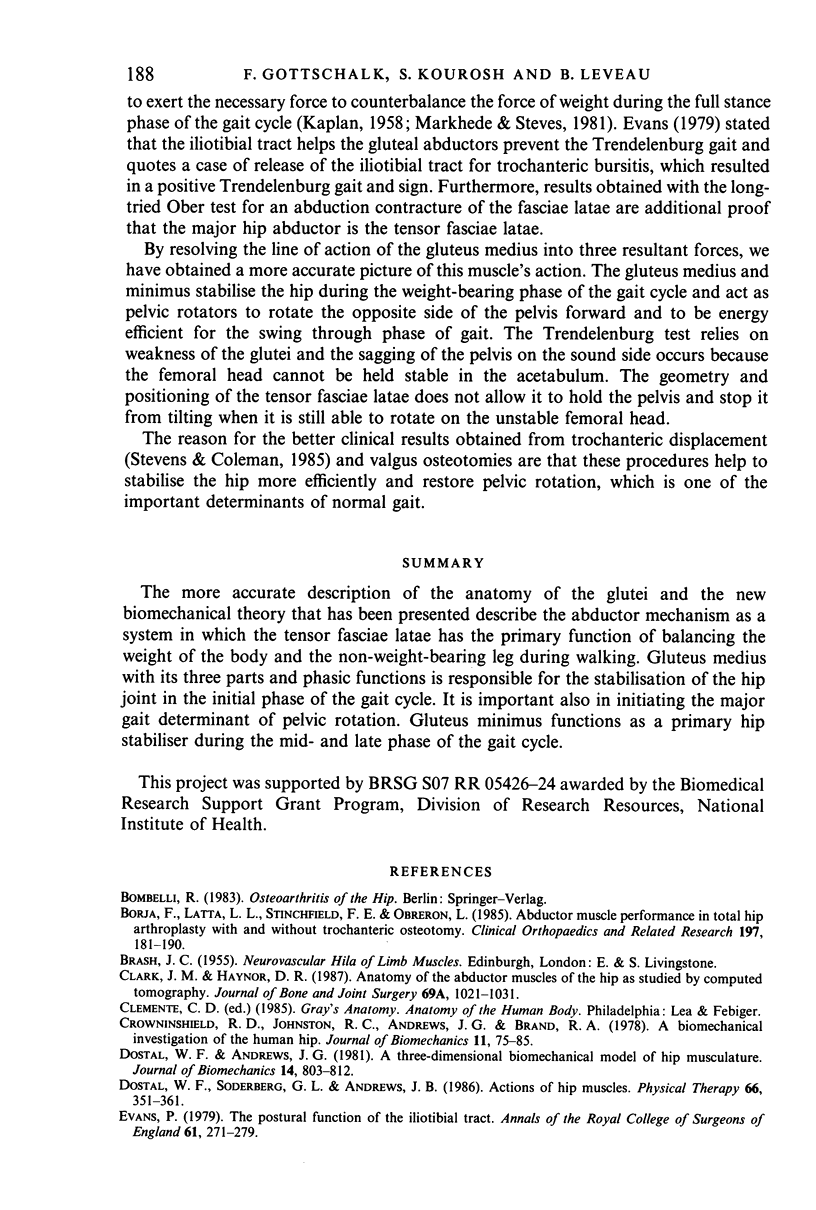
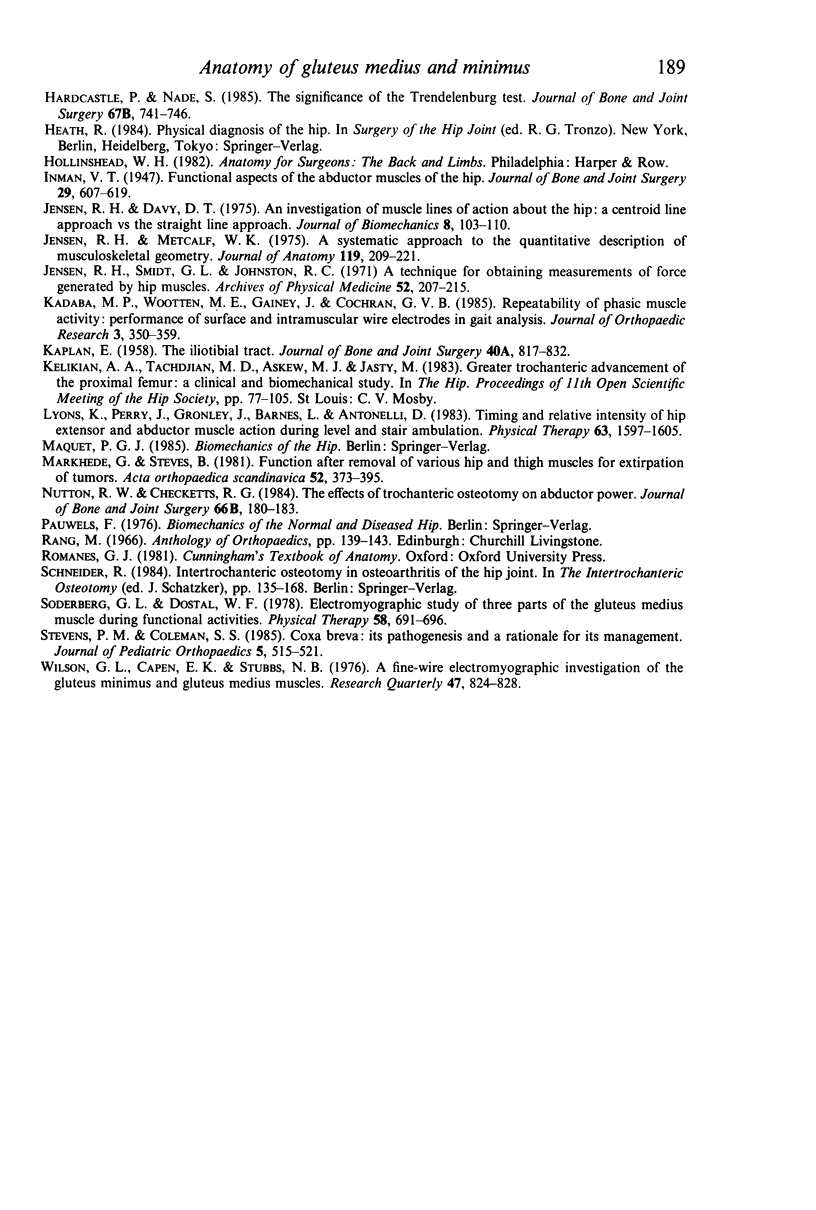
Images in this article
Selected References
These references are in PubMed. This may not be the complete list of references from this article.
- Borja F., Latta L. L., Stinchfield F. E., Obreron L. Abductor muscle performance in total hip arthroplasty with and without trochanteric osteotomy. Radiographic and mechanical analyses. Clin Orthop Relat Res. 1985 Jul-Aug;(197):181–190. [PubMed] [Google Scholar]
- Clark J. M., Haynor D. R. Anatomy of the abductor muscles of the hip as studied by computed tomography. J Bone Joint Surg Am. 1987 Sep;69(7):1021–1031. [PubMed] [Google Scholar]
- Crowninshield R. D., Johnston R. C., Andrews J. G., Brand R. A. A biomechanical investigation of the human hip. J Biomech. 1978;11(1-2):75–85. doi: 10.1016/0021-9290(78)90045-3. [DOI] [PubMed] [Google Scholar]
- Dostal W. F., Andrews J. G. A three-dimensional biomechanical model of hip musculature. J Biomech. 1981;14(11):803–812. doi: 10.1016/0021-9290(81)90036-1. [DOI] [PubMed] [Google Scholar]
- Dostal W. F., Soderberg G. L., Andrews J. G. Actions of hip muscles. Phys Ther. 1986 Mar;66(3):351–361. doi: 10.1093/ptj/66.3.351. [DOI] [PubMed] [Google Scholar]
- Evans P. The postural function of the iliotibial tract. Ann R Coll Surg Engl. 1979 Jul;61(4):271–280. [PMC free article] [PubMed] [Google Scholar]
- Hardcastle P., Nade S. The significance of the Trendelenburg test. J Bone Joint Surg Br. 1985 Nov;67(5):741–746. doi: 10.1302/0301-620X.67B5.4055873. [DOI] [PubMed] [Google Scholar]
- Jensen R. H., Davy D. T. An investigation of muscle lines of action about the hip: a centroid line approach vs the straight line approach. J Biomech. 1975 Mar;8(2):103–110. doi: 10.1016/0021-9290(75)90090-1. [DOI] [PubMed] [Google Scholar]
- Jensen R. H., Metcalf W. K. A systematic approach to the quantitative description of musculo-skeletal geometry. J Anat. 1975 Apr;119(Pt 2):209–221. [PMC free article] [PubMed] [Google Scholar]
- Jensen R. H., Smidt G. L., Johnston R. C. A technique for obtaining measurements of force generated by hip muscles. Arch Phys Med Rehabil. 1971 May;52(5):207–215. [PubMed] [Google Scholar]
- KAPLAN E. B. The iliotibial tract; clinical and morphological significance. J Bone Joint Surg Am. 1958 Jul;40-A(4):817–832. [PubMed] [Google Scholar]
- Kadaba M. P., Wootten M. E., Gainey J., Cochran G. V. Repeatability of phasic muscle activity: performance of surface and intramuscular wire electrodes in gait analysis. J Orthop Res. 1985;3(3):350–359. doi: 10.1002/jor.1100030312. [DOI] [PubMed] [Google Scholar]
- Kelikian A. S., Tachdjian M. O., Askew M. J., Jasty M. Greater trochanteric advancement of the proximal femur: a clinical and biomechanical study. Hip. 1983:77–105. [PubMed] [Google Scholar]
- Lyons K., Perry J., Gronley J. K., Barnes L., Antonelli D. Timing and relative intensity of hip extensor and abductor muscle action during level and stair ambulation. An EMG study. Phys Ther. 1983 Oct;63(10):1597–1605. doi: 10.1093/ptj/63.10.1597. [DOI] [PubMed] [Google Scholar]
- Markhede G., Stener B. Function after removal of various hip and thigh muscles for extirpation of tumors. Acta Orthop Scand. 1981 Aug;52(4):373–395. doi: 10.3109/17453678109050118. [DOI] [PubMed] [Google Scholar]
- Nutton R. W., Checketts R. G. The effects of trochanteric osteotomy on abductor power. J Bone Joint Surg Br. 1984 Mar;66(2):180–183. doi: 10.1302/0301-620X.66B2.6707052. [DOI] [PubMed] [Google Scholar]
- Soderberg G. L., Dostal W. F. Electromyographic study of three parts of the gluteus medius muscle during functional activities. Phys Ther. 1978 Jun;58(6):691–696. doi: 10.1093/ptj/58.6.691. [DOI] [PubMed] [Google Scholar]
- Stevens P. M., Coleman S. S. Coxa breva: its pathogenesis and a rationale for its management. J Pediatr Orthop. 1985 Sep-Oct;5(5):515–521. [PubMed] [Google Scholar]
- Wilson G. L., Capen E. K., Stubbs N. B. A fine-wire electromyographic investigation of the gluteus minimus and gluteus medius muscles. Res Q. 1976 Dec;47(4):824–828. [PubMed] [Google Scholar]



